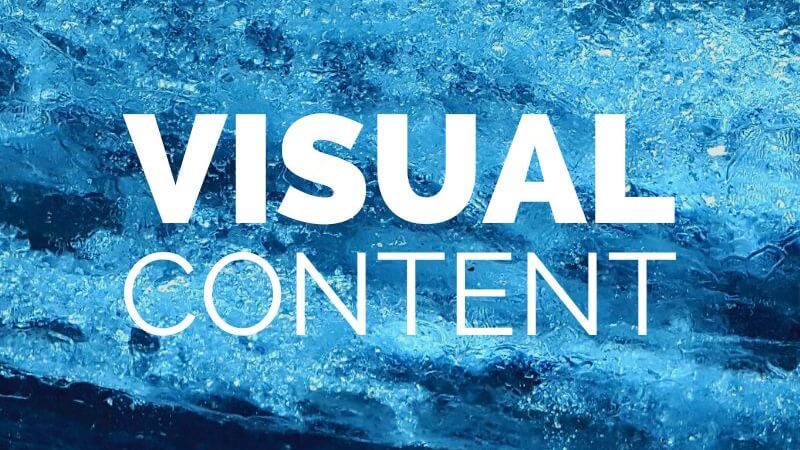What’s Missing in Your Content Strategy? 10 Things!

There’s nothing simple about creating a content strategy.
Maintaining and improving a content strategy over time? That’s even tougher. However, the odds are definitely in your favor. Only 44% of marketers have bothered to document their publishing strategy. Your efforts to refine and improve will give you a serious advantage! Here are 10 of the most common things marketers fail to include in their content strategy:
1. Audit & Maintenance
Your published content is assets. Far too many organizations publish – and quickly forget – their best blogs, landing pages, and whitepapers. Your process must include regular audit of your former content, and maintenance to keep your articles up-to-date and SEO-optimized.
2. A Defined Voice
How does your content sound? Is it written in a voice that’s familiar and appealing to your buyer personas? Your content needs its own unique voice to stand out online, or you’ll risk blending in with the rest.
3. Non-Digital Content
Non-digital content isn’t always the same as interruption marketing. In fact, depending on your industry, continuing to provide high-value articles and tutorials to your customers in print form may be a huge competitive advantage.
4. Workflows
It’s absolutely critical to document your process, especially if you’ll be using freelance writers or work on a large team. It keeps you organized and productive. Michael Cunningham recommends ensuring you build the following aspects into your content workflow:
Review and Approval Processes
Let’s face it, the review and approval process is about as unglamorous as it gets. And yet, without a thorough review and appropriate approvals, a fantastic piece of content will never see the light of day. Or worse, the final product will contain embarrassing errors.
Just like there is no template for a content marketing strategy, there isn’t a one size fits all workflow for the review and approval process. Documenting approval workflows is especially helpful for brands or agencies with multi-stage/multi-group approvals. When there are many people involved or large volumes of work, lots of effort is needed to manage the process.
By taking the time in advance to determine the routing of reviews and approvals based on the type of content and the type of people involved and documenting the steps in advance, you can save time and money. In fact, if you take it a step further and automate the review and approval process, you can reduce the effort spent managing proofs by 59% and increase the speed to market by 56%, both of which reduce costs and increase the internal rate of return.
The Legal and Compliance Routing Process
When I think back to my days on a corporate marketing team, I would typically get a shudder down my spine when I had to involve the legal department in the review process. Why? Because my team didn’t have a documented routing process explaining which lawyer to contact and when based on the type of content created. Nor did we have a full understanding of, or access to, regulatory information.
Turns out, if we had just kept the lawyers out of the review process as much as possible, many, many delays and frustrations could have been avoided.
The best way to do that is by getting the legal department involved by having them write the rules of compliance and distribute them so that everyone is on the same page from the beginning of the creative process. By getting the rules in the hands of the marketing department or freelance creatives from day one, they can produce near-final content before sending to legal or compliance staff for approval.
When it comes to matters of compliance, there is little room for error and guesswork. Don’t take any chances by documenting the legal and compliance routing process and including it in your content marketing strategy.
Project Accountability
You know those disaster movies where a military unit swoops into a science base and the commander barks out, “Who’s in charge?” Sometimes, the question is met with blank stares. Awkward, right? Well, that’s what can happen when the CEO or your client asks for an update on a project, essentially asking, “who’s in charge?”
If you’re not using a dedicated project manager, the answer to that question is sometimes tricky. Do you go to the writer who first conceived the project? Or do you ask the designer who is currently working on the layout? Perhaps it’s the vice president, content strategist, or even the CMO?
Marketing departments and creative teams need to understand who owns the projects they’re working on, who manages the deliverables, and who is interfacing with the internal or external client. These roles can be written into your content marketing plan so that everybody knows who is responsible for what.
And can answer the question, “Who’s in charge?”
Workflows Aren’t Sexy, But They’re Effective
Creating and documenting workflows aren’t glamorous jobs compared to other roles on the content marketing process. But the more work you do up front on these three areas, the more freedom your creative teams have to do what they do best: creating and distributing fantastic content marketing.
5. A True North Statement

The idea of a “true north statement” originated in lean manufacturing. It’s the idea of a single sentence that describes the goals of your content strategy. Examples statements could include:
- Provide the highest-quality content marketing tips
- Assist customers in finding the right mortgage
- Unbiased advice on Non-Profit Marketing
A well-written true north statement “expresses business needs that must be achieved and exerts a magnetic pull.” While lean implementations are often organization-wide revolutions, developing an effective statement will rest squarely in the hands of management. If you’re unsure whether you need one, or if your current mission statement is sufficient, check out the benefits and reasons below:
It’s a Governing Objective
The best true north statements aren’t remotely vague. “Consistently deliver quality,” or “have the happiest customers” are definitely things you should strive for, but they’re not true north statements. While they can certainly provide guidance during decision making, they’re not a definitive compass for your organization.
An effective true north statement is more likely to resemble one of the following:
- Experience double-digit client growth annually
- Provide the highest-quality products in our niche, just in time
- Always providing consistent results for clients with minimal waste
The statements above can be used by both executives and associates for making decisions on-the-fly. A great governing objective leaves few questions unanswered.
It Unifies Your Objectives
Every organization should have two types of goals. As Al Norval defines it, these are comprised of the following types:
- Clear business objectives, which can be easily quantified and measured.
- Hoshins, which speak to your philosophical goals and emotionally appeal to both clients and members of the organization.
It’s possible to combine both of these factors in a well-written true north statement, and you absolutely should strive to. Philosophical concepts about your company’s mission can help you drive your business objective at all levels of the organization.
Leading consulting firm Bain’s true north statement is slightly longer than average. However, with the help of phrases like “deep intellectual honesty’ and “openness to the 1% possibility that current beliefs could be wrong” they’ve done an effective job of combining both quantitative and philosophical factors.
Unify Your Leadership Team
Unless your company is quite small, developing a true north statement will almost certainly be a group effort. Few leaders have sufficient information to understand perfectly where the company has been in the past, and strives to be in the near future. Even more importantly, developing a true north statement as a group can lead to a more refined vision and better adoption throughout the organization.
Inc’s Karl Stark and Bill Stewart recommend working to align leadership’s objectives and understanding of the organization, and developing several true north statements in initial meetings on the topic. It’s unlikely you’ll be able to perfectly blend quantitative objectives and hoshins on the first try.
Remember, the goal of these working sessions is to develop something absolutely outstanding, and worthy of guiding your organization for years to come!
They Improve Communication
Once an organization defines their true north statement, improved flow of information often follows. You can provide all the reporting and openness you want, but without a clear mission, your teams will still struggle to make the right choices. An open lean culture coupled with a clear true north statement is often an unbeatable combination.
It’s Crucial for Tough Lean Implementations
If your company delivered one product built from minimal components, had state-of-the-art machinery, engaged associates, and perfectly happy clients, a lean implementation would be as simple as snapping your fingers. However, this is almost certainly not the case. Organizations are built around people, and people are complicated.
True north statements are publicized throughout an organization and adopted by staff. They can serve as a compass point during times of tough organizational change. Interruptions and disruptions to processes can be expected, which is why it’s crucial you have a guiding statement.
6. Paid Promotion
Only 20% of your content’s success is quality. The remaining 80% is promotion. Paid promotion isn’t a silver bullet, and it’s no substitute for organic community-building efforts. However, it can provide a much-needed shot in the arm for some brands.
7. Lead Conversion Opportunities
The more landing pages and offers you create, the more leads you’ll generate. Building success into your content strategy is downright simple.
8. Visual Content

Your brand needs to branch out into visual content, period. Even if your infographics and videos are curated, you can still reap the benefits of variety.
9. Comprehensive Campaigns
Marketing campaigns are a time-proven concept, and your content strategy should include them. Pick thematic ideas that matter to your customers, and build multiple forms of content around it.
10. Measurement
Your content strategy should be based on the right marketing metrics. It should include a plan for responding to your metrics quickly, too. Monitoring is absolutely crucial. In fact, it’s just about the only improvement tactic that’s guaranteed to work for everyone!
What’s missing from your content marketing strategy? Share your tips and experiences in the comments!

Comments (0)